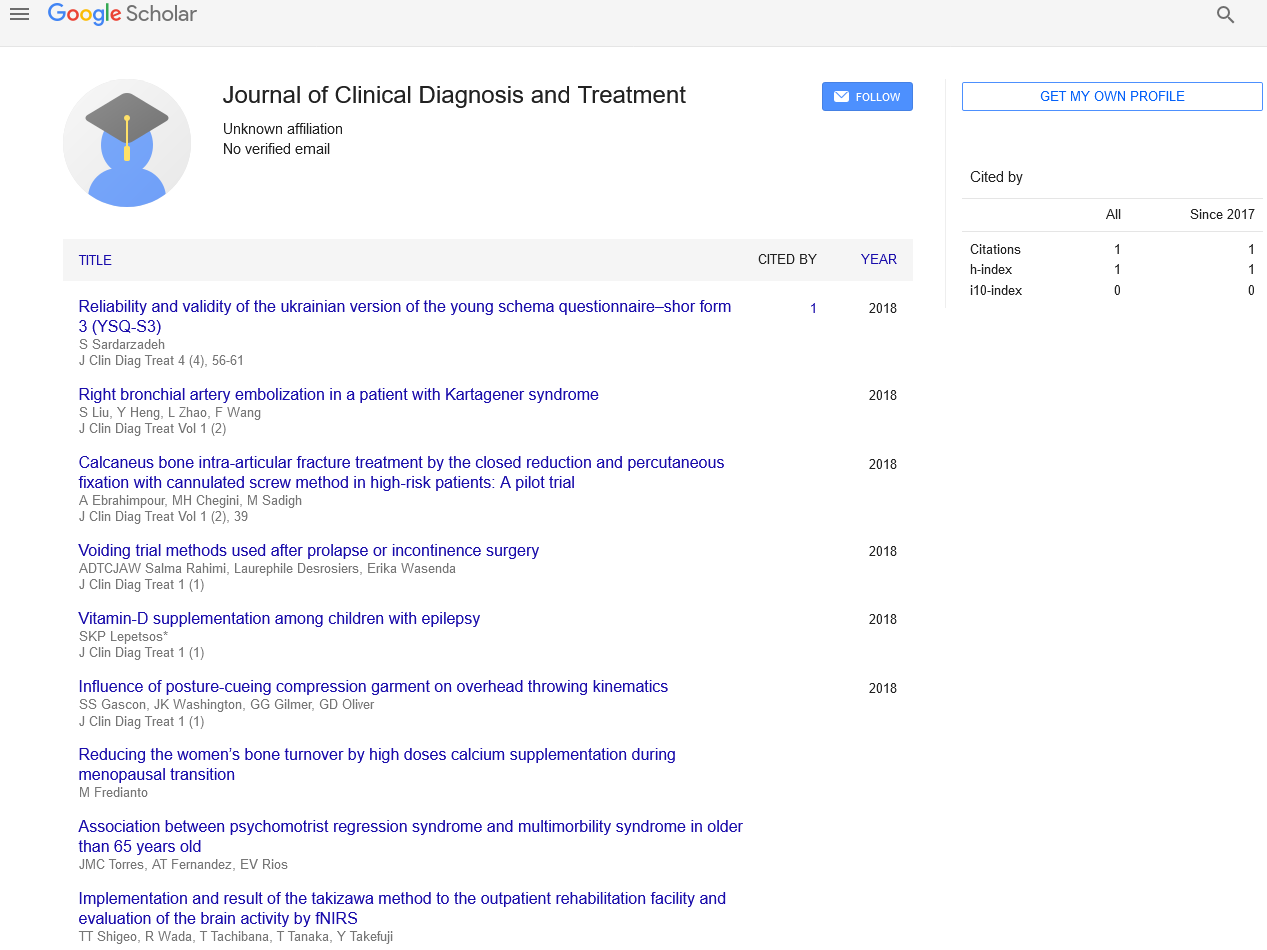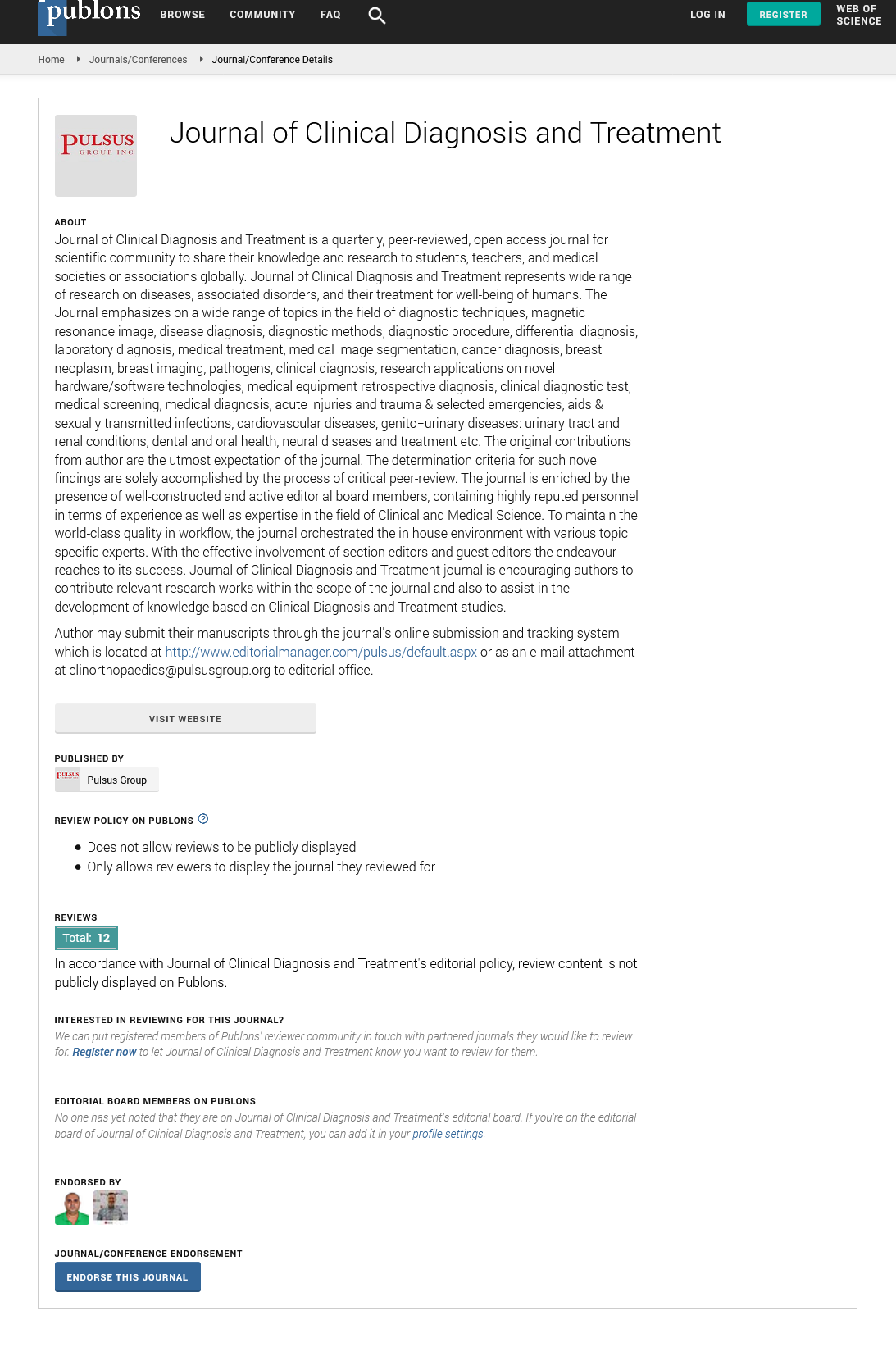Breast Cancer: The most frequent cancer in Women
Received: 18-Feb-2022, Manuscript No. PULJCDT-22-4278; Editor assigned: 20-Feb-2022, Pre QC No. PULJCDT-22-4278(PQ); Reviewed: 28-Feb-2022 QC No. PULJCDT-22-4278(Q); Revised: 02-Mar-2022, Manuscript No. PULJCDT-22-4278(R); Published: 12-Mar-2022, DOI: 10.37532/puljcdt.22.4(2).08-09
This open-access article is distributed under the terms of the Creative Commons Attribution Non-Commercial License (CC BY-NC) (http://creativecommons.org/licenses/by-nc/4.0/), which permits reuse, distribution and reproduction of the article, provided that the original work is properly cited and the reuse is restricted to noncommercial purposes. For commercial reuse, contact reprints@pulsus.com
Abstract
Breast cancer is now the most commonly diagnosed life-threatening malignancy in women, as well as the leading cause of cancer death. Breast cancer research has made amazing progress in our understanding of the illness over the previous two decades, resulting in more effective and less harmful treatments. Early detection at stages amenable to complete surgical resection and curative therapy has resulted from increased public awareness and enhanced screening. As a result, breast cancer survival rates have considerably improved, particularly among younger women. This page discusses the different types of breast cancer, their causes, clinical symptoms, and the various non-drugs (surgery and radiation) and drug (chemotherapy, gene therapy, and so on) treatments.
Introduction
Breast cancer is the most frequent cancer in women and the second leading cause of death from cancer in women in the United States. Breast cancer is a type of cancer that develops in the breast tissue, most usually in the inner lining of milk ducts or the lobules that supply milk to the ducts. Breast cancer is the second most frequent type of non-skin cancer (after lung cancer) and the fifth most common cause of cancer mortality in women worldwide, accounting for 10.4% of all cancer cases in women. Breast cancer claimed the lives of 519,000 people globally in 2004. (7 percent of cancer deaths; almost 1 percent of all deaths). Breast cancer is 100 times more common in women than in men, yet males have a worse prognosis due to detection delays.
Cancer cells have DNA and RNA that are very similar (but not identical) to cells from the organism from whence they came. This is why they are not always noticed by the immune system, especially when it is compromised.
A change / mutation of DNA and/or RNA cause cancer cells to originate from normal cells. These modifications / mutations can occur naturally (ill Law of Thermodynamics - increase in entropy) or be induced by other factors such as nuclear radiation, electromagnetic radiation (microwaves, X-rays, Gamma-rays, Ultraviolet-rays, etc.), viruses, bacteria and fungi, parasites (due to tissue inflammation / irritation, heat, chemicals in the air, water, and food, mechanical celllevel injury, free radical All of these things can cause cancer-causing mutations. As a result, cancer is known as a "Entropic Disease," because it is linked to a rise in entropy in the organism to the point where it can no longer rectify it. To allow the organism to return to a stable entropic state, external intervention is required. Cancer arises when the immune system malfunctions and/or the number of cells created exceeds the immune system's ability to remove. Under certain conditions, such as an unfavorable environment (due to radiation, pollutants, etc. ), a bad diet (unhealthy cell environment), persons with hereditary mutation predispositions, and people of advanced age, the rate of DNA and RNA mutations can be excessively high.
Breast cancer refers to the uncontrolled growth and multiplication of cells that begin in the breast tissue, and is usually termed after the body part in which it first appeared. There are two types of tissues in the breast: glandular tissues and stromal (supporting) tissues. The milk-producing glands (lobules) and ducts (milk passageways) are housed in glandular tissues, while the fatty and fibrous connective tissues of the breast are found in stromal tissues. Lymphatic tissue— immune system tissue that drains cellular fluids and waste—is also found in the breast. There are a variety of tumours that can grow in various locations of the breast. The majority of tumours in the breast are caused by benign (non-cancerous) alterations. For example, fibrocystic change is a non-cancerous disorder in which women develop cysts (fluid-filled packets), fibrosis (the creation of scar-like connective tissue), lumpiness, and thickness, tenderness, or pain in their breasts. The cells that lining the ducts are where most breast tumours start (ductal cancers). Some cancers start in the cells that line the lobules (lobular tumours), while others begin in other tissues.
Breast cancer has long been linked to a family history of the disease. The importance of maternal and paternal relatives cannot be overstated. If the affected relative was diagnosed with breast cancer when she was young, had cancer in both breasts, or is a close relative, the chance is higher. In calculating risk, first-degree relatives (mother, sister, and daughter) are the most important. Breast cancer in several second-degree relatives (grandmother, aunt) may further increase risk. When a man has breast cancer, it puts all of his female relatives at danger. BRCA1 and BRCA2 are defective genes that, when passed down through the generations, significantly increase the chance of breast cancer, with lifetime risks ranging from 40 to 8%. Women with the BRCA1 gene are more likely to develop breast cancer at a young age.






